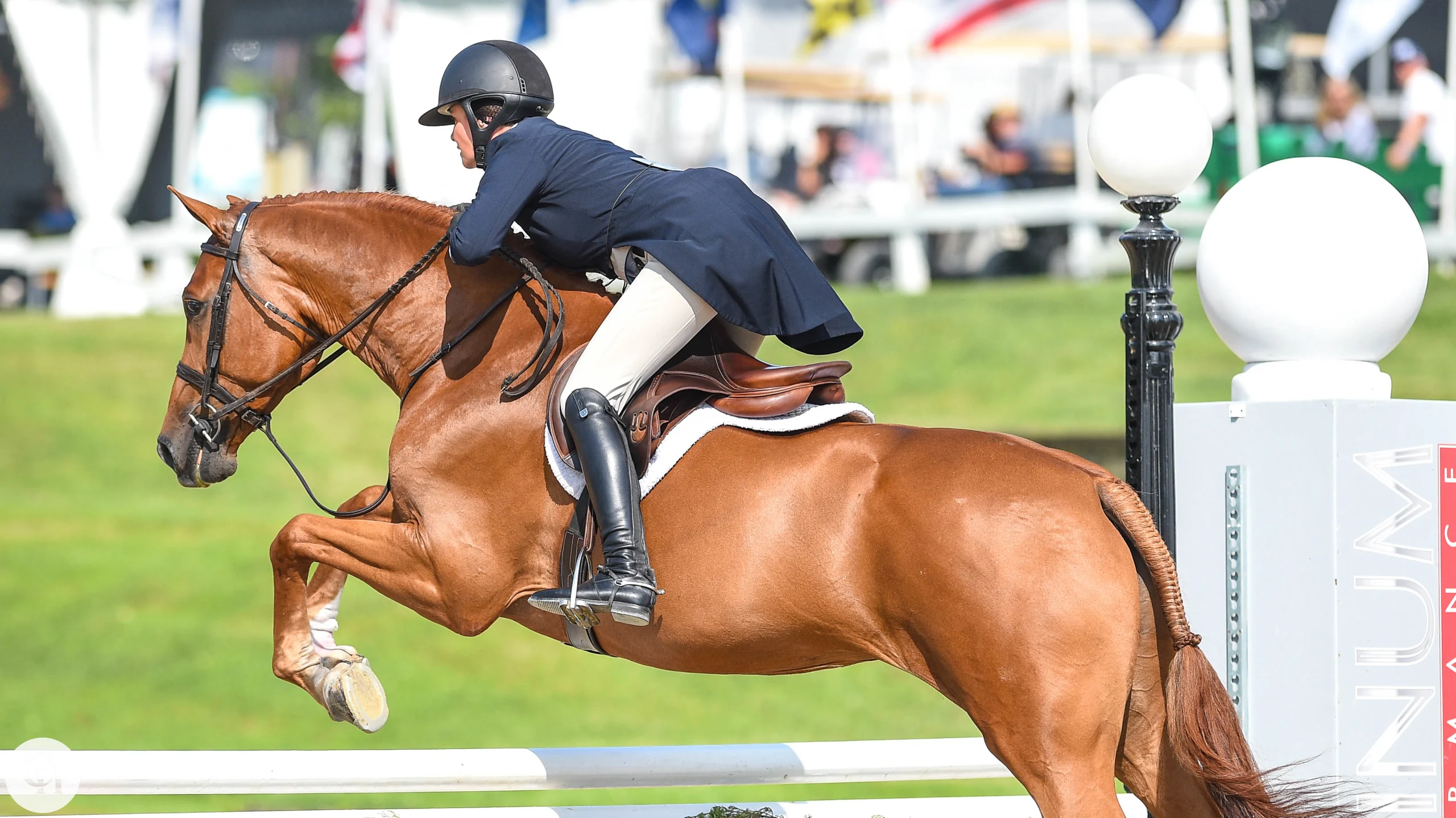Horse welfare has been a hot topic throughout the U.S. Hunter Jumper Association’s monthly virtual town halls, and Monday night’s meeting was no different. USHJA President Mary Knowlton opened the meeting with an overview of some of the rule change proposals that will be up for discussion later this year. The rule changes will be made available for official comment ahead of the USHJA Annual Meeting, to be held Dec. 4-7 in Concord, North Carolina.
The board proposal that garnered the most conversation was one regarding limiting the number of classes a horses can jump per day at a show.
“We started conversations on this group before; that’s something people have lots of opinions [about],” Knowlton said. “We put the number very high, nine classes a day. Nine crossrail classes is very different from nine 1.30-meter classes. It would be over hunters, jumpers and equitation.”
Knowlton pointed out that if a horse showed from Wednesday to Sunday, it could show in 45 over-fences classes under this proposal. “I don’t know people are doing that, but with this rule, you could,” she said.

She said the board intentionally put the number high to encourage conversation and hopefully find the right number. Another question up for debate is whether there should be additional restrictions: Should the fence height play a part? What about the age of the horse?
Whether those restrictions should exist was met with mixed reactions.
“On the number of classes with the crossrails example: Horses/ponies in those divisions are there for a reason (usually age, sometimes limited athleticism, or both),” one anonymous attendee wrote. “So, those classes are still a lot for those animals.” Another felt that the number should be based on class height or division.
ADVERTISEMENT
Betsy Checchia, an amateur rider from Zone 8, pointed out that in order for this rule to be successful, it would need be enforceable, and asked whether that would that fall to the show secretary or stewards. Knowlton replied that it could be as simple as software in the show office, but that it was an important point to iron out before approval.
Viable Biosecurity Measures
There are fewer rule change proposals coming forward in December than previous years, Knowlton said. Several related to biosecurity, which has been a hot topic for many years following outbreaks of equine herpesvirus and vesicular stomatitis. California has four counties currently affected by vesicular stomatitis, according to the U.S. Equestrian Federation’s update on Sept. 18.
While some changes involve isolation protocol, one proposed change would require recording a horse’s temperature twice daily while attending. Participants pointed out that enforcement would be a problem.
“At Colorado in June, there was a requirement that each horse have a form filled out with temps twice a day,” Checchia wrote. “I did mine, but few did, and the show apparently did not check to see if people were complying. What’s the point of having a requirement if you don’t follow up on it?”
“If that rule were to pass, certainly someone from management or a steward is going to have to pay attention to that and make sure it happens,” Knowlton acknowledged.
An anonymous attendee asked whether monitoring temperatures at shows was actually useful if horse owners weren’t already doing it at home and had those charts available upon arrival at the show.
ADVERTISEMENT
Monitoring a horse’s temperature ahead of and during a show is not a unique concept. Horses competing in Fédération Equestre Internationale classes already are required to have their temperature taken twice daily while on show grounds—and for three days preceding their arrival—all of which must be recorded on the FEI HorseApp.
Making A Better Annual Meeting
Knowlton also asked participants to weigh in on what they’d like to see at the annual meeting to make it more appealing for members to attend in person. Historically, the meeting is focused on discussions of rule changes, first in the open forum, then in the hunter and jumper working groups and in the committees before reaching the board of directors in the final sessions.
The schedule isn’t set for this year yet, and if members want to see more topic-based breakout sessions, the association can make that happen, Knowlton said.
Eric Aho, an amateur from Massachusetts, advocated for continued access to virtual sessions, which give members a chance to participate even if they could not travel to the meeting.
Betsy Kieffer, an amateur from Minnesota, suggested that smaller committee meetings might have more value if held virtually, rather than in person.
“I hate going to a meeting that I’m really interested in, (like Childrens/Adult Amateur) and it turns out that only the chair and the USHJA rep are there,” she said. “I do feel that the meetings the first day are valuable in person.”
The next town hall is scheduled for 7 p.m. Eastern Oct. 23. People may submit questions or comments to feedback@ushja.org.














